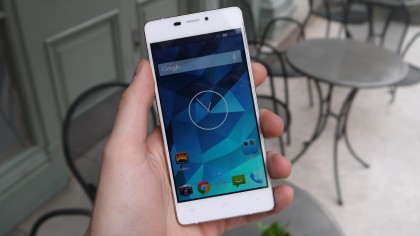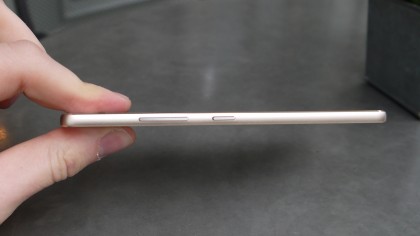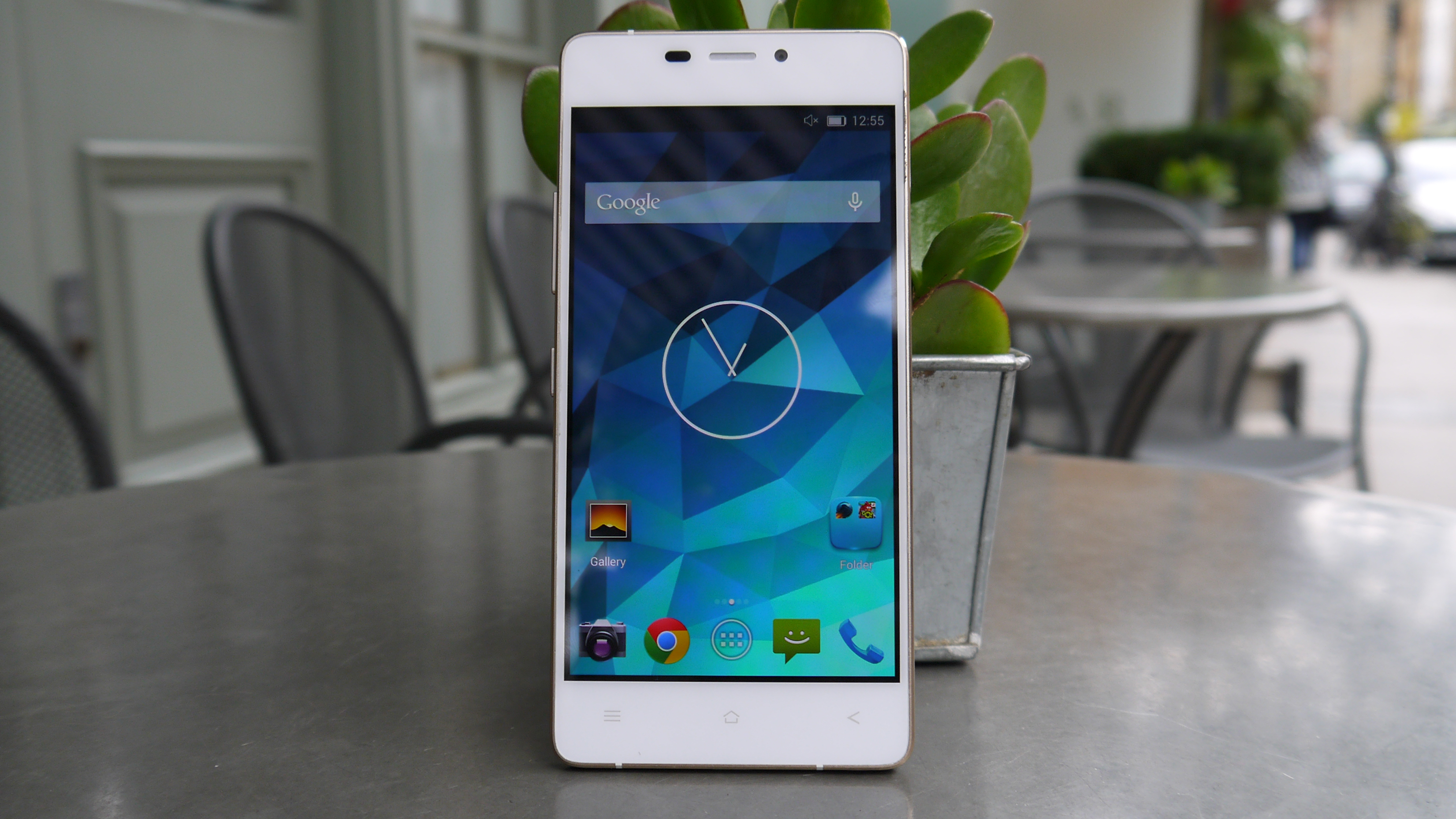TechRadar Verdict
A great screen and unblemished Android experience wrapped in a strikingly thin and light chassis. But compromises made to achieve the design mean functionality suffers and the result really lets the Tornado 348 down.
Pros
- +
Thin design
- +
Excellent AMOLED screen
- +
Screen replacement service
- +
Good camera
Cons
- -
No microSD, 4G or NFC
- -
Not 1080p screen
- -
Patchy front-facing camera
- -
Better value elsewhere
Why you can trust TechRadar
The title of "world's thinnest smartphone" is a fleeting one. No sooner had UK start up Kazam revealed the 5.1mm thin Tornado 348 then along came Oppo with its 4.85mm Oppo R5.
If you hadn't even heard of Kazam to begin with I wouldn't be surprised; the company's only two years old.
The Tornado 348 is the brand's flagship device and looks instantly familiar as a sort of iPhone 6/Sony Xperia Z3 hybrid. It doesn't push the boundaries in terms of specs or pricing, but Kazam has got a couple of after-sales features that give the handset its USP. And, of course, it's very thin.
Kazam is asking £249 for the Tornado 348 and that gets you a 4.8-inch 720p screen, 1.7GHz octa-core processor, 1GB of RAM, 16GB of internal storage, 8MP rear camera, 5MP front snapper and Android 4.4.2 KitKat.
Design is what this phone is all about and Kazam has kept it as svelte and streamlined as possible at 139.8 x 67.5 x 5.15mm. The 95.5g weight is extremely light for a smartphone and it's very well distributed across the chassis.

There's no doubt that if you're a minimalist fan of the skinny jeans, then you're going to appreciate the Tornado's chassis. But I'd argue that this level of thinness really isn't crucial to your buying decision when it comes to a new mobile.
There are practical reasons why having a phone this thin isn't a good idea and the whole bendgate controversy is one of them. It's pretty clear that exerting a minimal amount of pressure at both ends of the Tornado 348 causes it to flex noticeably.
Sign up for breaking news, reviews, opinion, top tech deals, and more.
Secondly, Kazam has neglected to add a microSD card to the phone, presumably in an effort to keep it thin. This isn't much of a problem when the internal storage is 32 or 64GB, but with only 16GB on board it's an issue.

Whether or not the thinness is necessary, I still feel the Tornado 348 is an attractive handset to look at and a small part of me wants this plucky British start up to be successful.
The front of the phone is free from any kind of physical buttons but does have the soft-touch Android keys on the bottom of the bezel. It also lacks any kind of a notification light. This is a small but valuable point as some handsets these days boast a small light that winks at you when you've received an email, text message or other notification.
Not having one isn't a great omission, but I did find it annoying as I tend to keep my phone on silent for the majority of the time.

The chassis is ringed with a champagne gold metal strip with protruding buttons for the volume rocker and power switch. Both buttons are located along the left hand side whilst the Tornado's micro SIM slot is the only feature gracing the right hand side.
Both the front and the back of the Tornado are coated with Corning's Gorilla Glass 3 which means its tough, but also slippy to hold and prone to fingerprint smears. The glass back and rounded corners mean from the rear the phone looks a lot like it belongs in Sony's Xperia range.

The Tornado 358 charges via microUSB and both the port and the handset's headphone jack are on the bottom of the phone, just like you'd find on an iPhone.
The design is one of the strongest elements of this phone. It's no small feat to make a smartphone this thin and light. But I'd argue that the similarity to Apple and Sony is more detrimental than positive because it removes the originality.
